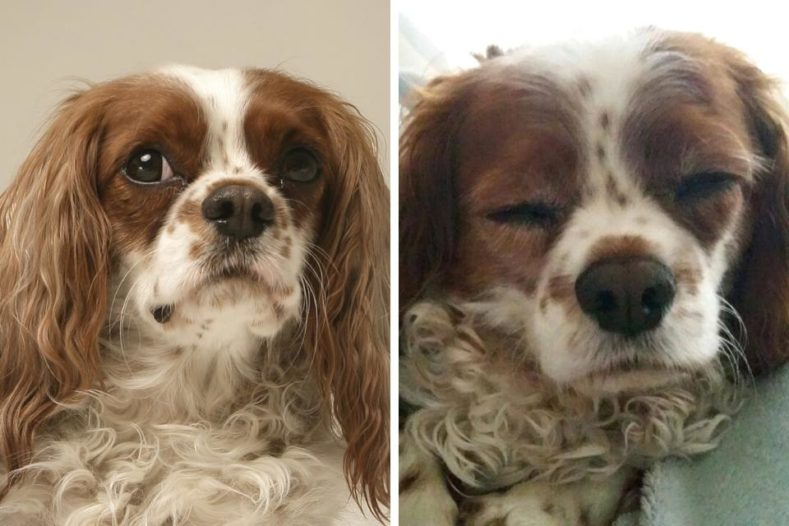A recent study based at Fitzpatrick Referrals, partner practice of the School of Veterinary Medicine at the University of Surrey, found that canine Chiari-like malformation (CM) can cause significant pain and impact on activity, temperament and sleep.
Lead author Professor Clare Rusbridge was inspired to conduct the study because of lack of clarity on the recognition and diagnosis of the clinical signs associated with CM as opposed to syringomyelia (SM).
CM is an abnormality in the skull, making it smaller, and impacting on the brain to alter the flow of cerebrospinal fluid; this results in pain and a collection of fluid pockets within the spinal cord. These fluid pockets are commonly known as SM and over time can cause irreversible damage to a dog’s spinal cord. However, it is not clear whether signs of pain in affected dogs are due to CM or SM or both.
To try to rectify this Clare studied the medical records of all the Cavalier King Charles Spaniels diagnosed with CM associated clinical signs presenting to her at Fitzpatrick Referrals over a five year period. She documented the historical and examination findings and related them to the MRI findings including presence and size of the SM.
She found common signs in all dogs were vocalisation, spinal pain (neck, middle or lower back), reduced activity, reduced stairs or jumping ability, aversion to being touched or groomed, altered emotional state (described as being more timid, anxious, withdrawn or aggressive) and sleep disturbance. A tendency to rub or scratch at the head or ears was common but was more likely in dogs with small or no SM suggesting that this may be a sign of head discomfort associated with CM. Head and ear rubbing was not associated with the presence of material within the middle ear (a condition which is also common in this breed and often given the acronym PSOM).
The only signs that were specific to SM were phantom scratching, scoliosis (twisted spine) and weakness and these were only present when the SM was large (at least 4mm wide).
This study is important because it suggests that CM alone is a cause of pain in many dogs and an aim is to use the information gained in this study to develop a questionnaire to determine the risk of CM and monitor the response to clinical signs.

Charlie’s first signs were a tendency to rub at his nose and face and he was adverse to his head being touched or groomed. Charlie was referred when he was one year old and after his guardian was awoken in the night by Charlie screaming in apparent pain. Clinical examination by his vet suggested neck sensitivity. MRI revealed CM but no SM. Since diagnosis, Charlie’s signs have mostly been controlled by medication but occasionally he has a breakdown in pain control. On this day the atmospheric pressure had dropped and thunderstorms were forecast – weather conditions have been hypothesised to affect pain.
Read the paper in full: Behavioral and clinical signs of Chiari‐like malformation‐associated pain and syringomyelia in Cavalier King Charles spaniels
Read more about our neurology service
3 minute read
In this article







